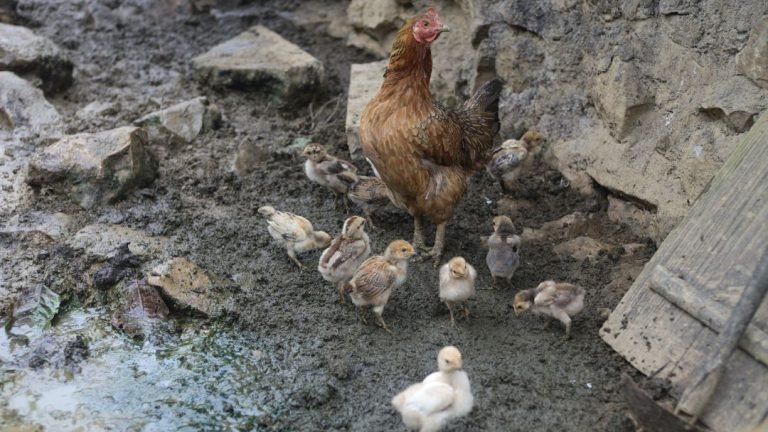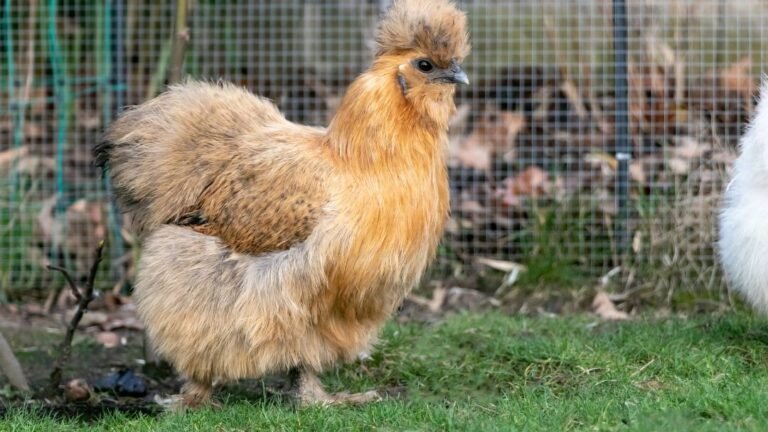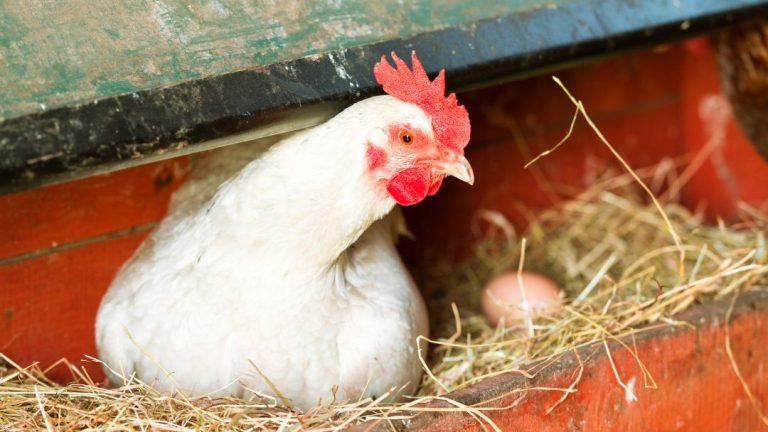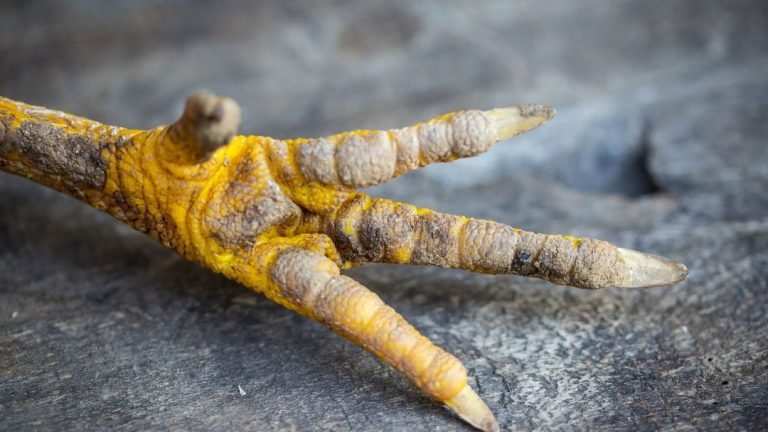Spraddle legs in chicks is a condition that causes the legs to spread out to the side instead of being positioned directly beneath the body. It can be caused by various factors, such as nutritional deficiencies, genetic abnormalities, or incubation issues.
Treatment options include providing a supportive device to help realign the legs, proper nutrition and exercise, and addressing any underlying health issues. To prevent spraddle legs, it is crucial to provide chicks with a balanced diet, ensure proper incubation conditions, and promote exercise.
By addressing the causes, providing appropriate treatment, and implementing preventive measures, spraddle legs in chicks can be effectively managed.
Genetic Factors
Role Of Genetics In Spraddle Leg Development:
When it comes to spraddle leg in chicks, genetic factors play a crucial role in the development of this condition. It can be traced back to the inheritance of certain genes that affect the chick’s leg structure and coordination. These genes can result in abnormalities within the skeletal and muscular systems, leading to the splaying of legs.
Oftentimes, spraddle leg is a result of a condition known as slipped tendon. This condition can be caused by genetic factors where the tendons that hold the legs together become weak or slip out of position. As a result, the chick is unable to stand or walk properly, with its legs spread apart in an awkward manner.
Impact Of Breeding Practices On Incidence Of Spraddle Legs:
It is important to note that breeding practices can significantly contribute to the incidence of spraddle legs in chicks. Breeders have a vital role in preventing this condition by implementing proper breeding strategies that prioritize the health and welfare of the chicks.
1. Selective breeding: Breeders can reduce the chances of spraddle leg development by selectively breeding from individuals with strong leg structure and coordination. By carefully choosing parents with healthy leg traits, breeders can minimize the risk of passing on genetic predispositions to their offspring.
2. Avoiding inbreeding: Inbreeding can exacerbate the chances of spraddle leg occurrence as it increases the likelihood of inheriting faulty genes. Breeders should focus on diversifying the gene pool by introducing unrelated individuals during the breeding process.
3. Genetic testing: Conducting genetic tests on parent birds can provide valuable insights into the presence of relevant genetic markers associated with spraddle leg. By identifying birds carrying these markers, breeders can make informed decisions to avoid pairing them, consequently reducing the risk of spraddle leg in their chicks.
By prioritizing the careful selection of breeding individuals, avoiding inbreeding, and utilizing genetic testing, breeders can significantly decrease the prevalence of spraddle leg in their flocks. These practices, combined with proper husbandry techniques, can help ensure healthy and strong chicks with well-formed legs.
Nutritional Deficiencies
Link Between Inadequate Nutrition And Spraddle Leg Occurrence
Nutritional deficiencies play a crucial role in the occurrence of spraddle leg in chicks. This condition, also known as splay leg, is characterized by an abnormal spreading of the legs, which hinders the chick’s ability to walk, stand, and feed properly. It can be a distressing sight for poultry farmers, but understanding the link between inadequate nutrition and spraddle leg occurrence can help prevent and treat this condition effectively.
Chicks require a well-balanced diet to develop strong and healthy leg muscles. A nutrient-rich diet provides the necessary vitamins, minerals, and other essential nutrients that support optimal skeletal development. Depriving chicks of these vital nutrients can lead to muscle weakness, affecting their leg coordination and causing spraddle leg.
Among the significant nutritional deficiencies linked to spraddle leg, vitamin D3 and electrolyte imbalances top the list. Adequate levels of vitamin D3 are necessary for the absorption and utilization of calcium, a mineral crucial for strong bones and muscle function. Insufficient vitamin D3 can result in weakened leg muscles and an increased risk of spraddle leg.
Similarly, electrolyte imbalances, such as low levels of sodium, potassium, and magnesium, can disrupt the chick’s muscle function. These electrolytes are involved in nerve impulse transmission and muscle contraction. When their levels are below normal, it can contribute to spraddle leg development.
Importance Of Balanced Diet For Chick Development
A balanced diet is essential for the overall development of chicks, including their skeletal and muscular systems. Providing the right combination of nutrients ensures proper growth, strengthens bone structure, and supports muscle development. When chicks receive a balanced diet, their legs and muscles are adequately supported, reducing the risk of spraddle leg.
Chicks need a variety of nutrients to thrive, including proteins, vitamins, minerals, and carbohydrates. Proteins are especially important for chick growth, as they provide the building blocks for muscles and ligaments. Including high-quality protein sources, such as poultry feed formulated specifically for chicks, helps ensure their proper development.
Vitamins and minerals are crucial for various physiological processes, including bone health. Calcium, phosphorus, and vitamin D3 work together to support strong bones and prevent skeletal disorders, like spraddle leg. Including these nutrients in the chick’s diet, either through specialized feed or appropriate supplementation, is vital to their well-being.
In addition to proteins and minerals, providing carbohydrates is essential for energy production. Carbohydrates are the primary source of fuel for the chick’s rapidly growing body and help sustain their activity levels. Ensuring that the chick’s diet is well-balanced and includes all these nutrients creates an ideal environment for their overall development and reduces the likelihood of spraddle leg.
As responsible poultry keepers, it is essential to prioritize the nutritional needs of the chicks in our care. By understanding the link between inadequate nutrition and spraddle leg occurrence, we can take proactive steps to prevent this condition and provide the foundation for strong and healthy chicks. Ensuring a well-balanced diet that meets their specific nutritional requirements is key to supporting their development and promoting their overall well-being.
Incubation Issues
Proper incubation is crucial for the healthy development of chicks. However, when incubation conditions are not optimal, it can have detrimental effects on their leg health. In this section, we will explore how improper incubation conditions, such as temperature and humidity imbalances, can impact the chick’s legs. Understanding these influences will help you take necessary measures to prevent and treat spraddle legs in chicks.
Influence Of Improper Incubation Conditions On Chick Leg Health
Incorrect incubation conditions can significantly affect the musculoskeletal development of chicks, leading to spraddle legs. When chicks are exposed to suboptimal temperature and humidity levels during incubation, it can disrupt their bone and muscle growth, resulting in leg deformities.
The incubation period is a crucial stage where the chick’s bones and muscles begin to develop rapidly. Any deviations from the optimal conditions can interfere with this process and contribute to the development of spraddle legs. It is essential to provide a controlled and stable environment for the eggs to ensure proper leg development in the chicks.
Temperature And Humidity Imbalances And Their Effects On Legs
Temperature plays a crucial role in incubation as it directly affects the metabolic rate of the developing chick. Incorrect temperature levels can slow down or accelerate the growth of bones and muscles, leading to leg deformities. High temperatures can cause excessive growth, while low temperatures can result in decreased growth. Both situations can negatively impact the chick’s leg health.
Humidity levels during incubation are equally critical for the chick’s leg development. Inadequate humidity can lead to the drying out of the eggshell, making it difficult for the chick to move and position its legs properly. On the other hand, excessive humidity can soften the eggshell, resulting in weak leg muscles and skeletal abnormalities.
To prevent spraddle legs due to improper temperature and humidity, ensure you have a reliable incubator that can maintain the appropriate settings throughout incubation. Monitor and maintain the temperature within the recommended range of 99.5 to 100.5 degrees Fahrenheit (37.5 to 38 degrees Celsius). Humidity levels should be kept around 45 to 50% during the first 18 days and increased to 65% during the final days of incubation.
Proper ventilation is also essential during incubation to ensure fresh air circulation and prevent a buildup of harmful gasses. Regularly monitor and adjust these factors to create a favorable environment that promotes healthy leg development in chicks.
Splinting Techniques
Explanation And Demonstration Of Splinting Methods
When it comes to treating spraddle legs in chicks, splinting is a commonly used method that can help correct the leg deformity and promote proper growth. Splinting involves the use of external supports or devices to realign the legs, giving the chicks an opportunity to develop normally. Let’s take a closer look at some popular splinting techniques.
Benefits And Limitations Of Splinting As A Treatment Option
Splinting has proven to be an effective treatment option for spraddle legs in chicks, providing several benefits:
- Alignment: Splints help align the legs, allowing proper weight distribution and facilitating muscle and skeletal development.
- Accessibility: Splinting can easily be done at home using readily available materials, making it a convenient and cost-effective option.
- Non-Invasive: Unlike surgical interventions, splinting is a non-invasive method that doesn’t require any complex procedures or anesthesia.
- Early Correction: By starting splinting early, during the first few days of the chick’s life, the chances of successful correction are considerably higher.
However, it’s important to acknowledge the limitations of splinting as well:
- Individual Variation: The success of splinting depends on the severity of the spraddle legs and the individual chick’s response to treatment. Not all cases may be fully corrected with splinting alone.
- Monitoring: Regular monitoring is crucial to ensure the splint remains in place and that the chick’s legs are positioned correctly. This requires dedicated attention and care.
- Early Intervention: Splinting is most effective when started early, and delaying treatment may reduce the chances of complete correction.
Explanation And Demonstration Of Splinting Methods
Now, let’s explore the two primary splinting techniques used for treating spraddle legs in chicks:
- Hock Hobbles: Hock hobbles are small devices that are placed above the hock joint, holding the legs in the correct position. These hobbles are typically made from medical tape or Velcro straps. By limiting the chick’s leg movement, hock hobbles encourage the proper muscle development and realignment of the legs.
- Binder Clip Splints: Binder clip splints involve the use of small binder clips to gently hold the chick’s legs in the desired position. The splint is made by attaching the binder clips to a suitable cushioning material, such as foam or rubber band strips, ensuring that the legs remain parallel and straight.
Both hock hobbles and binder clip splints require careful application and should be placed on the chick in a way that doesn’t cause discomfort or restrict blood flow. It is advisable to seek guidance from a professional or an experienced poultry breeder before attempting these techniques.
Physical Therapy Exercises
Spraddle legs, also known as splay legs, is a common condition that affects newly hatched chicks. It occurs when the chick’s legs are unable to support its weight properly, causing them to spread apart. If left untreated, spraddle legs can lead to difficulties in walking, feeding, and even survival. Fortunately, there are physical therapy exercises that can help correct this condition and improve the chick’s mobility and overall well-being.
Introduction To Exercises To Correct Spraddle Legs
To effectively treat spraddle legs in chicks, physical therapy exercises play a crucial role. These exercises are simple and can be performed at home with minimal equipment. They help strengthen the chick’s leg muscles, improve coordination, and encourage proper leg positioning. Below is a step-by-step guide on performing physical therapy exercises, ensuring each H3 heading adheres to HTML syntax.
Step-by-step Guide For Performing Physical Therapy On Chicks
Performing physical therapy exercises on chicks with spraddle legs is a delicate process that requires patience and care. It is important to ensure that the chick is in a comfortable and secure environment before beginning the exercises. The following steps will guide you through the process:
- Prepare a suitable surface: Choose a flat and non-slippery surface, such as a towel or foam pad, to create a supportive platform for the chick.
- Wrap the legs: Take a strip of adhesive bandage or vet wrap and gently wrap it around the chick’s legs, just above the hock joint. This will help bring the legs closer together and provide support.
- Create a spacer: Depending on the severity of the spraddle legs, you may need to create a spacer to maintain the correct leg positioning. This can be done by cutting a small piece of foam or using a small object like a cotton ball.
- Place the spacer: Carefully position the spacer between the chick’s legs, near the hock joint. This will encourage the legs to stay in the correct position and prevent them from spreading apart.
- Monitor and adjust: Keep a close eye on the chick during the therapy session. If you notice any discomfort or if the legs continue to spread, consider adjusting the bandage or the position of the spacer.
- Let the chick rest: It is essential to allow the chick to rest and recuperate after the therapy session. Provide a warm and safe environment for the chick to relax and regain strength.
By following this step-by-step guide, you can effectively perform physical therapy exercises on chicks with spraddle legs. Remember to be gentle and patient throughout the process, as the chick’s well-being is of utmost importance. Regularly practicing these exercises will help improve the chick’s leg strength and coordination, correcting the spraddle legs and enabling it to lead a healthy and active life.
Medical Interventions
When it comes to treating spraddle legs in chicks, there are various medical interventions that can aid in leg recovery. These interventions include medications and supplements designed to promote bone and muscle development, improve stability, and enhance overall leg strength.
Overview Of Medical Treatments For Spraddle Legs
Medical treatments for spraddle legs in chicks aim to correct the condition and facilitate proper leg growth and functionality. Here is an overview of some common medical interventions:
Leg Braces
Physical Therapy
Orthopedic Treatment
Leg braces are often used in the early stages of treatment to provide support and alignment for the affected limbs. They help to keep the legs in the correct position, allowing the chick’s muscles and bones to develop properly. Braces can be made from various materials, including soft bandages or specially designed braces that provide additional stability.
Physical therapy plays a crucial role in the recovery process for chicks with spraddle legs. It involves gentle stretching exercises, massages, and controlled movements that help to strengthen the muscles and improve coordination. Physical therapy sessions are usually conducted by a trained professional who can guide the chick through the correct exercises.
In severe cases of spraddle legs, surgical intervention may be required. Orthopedic procedures can involve correcting bone deformities, repairing ligament or tendon damage, or realigning joints to improve leg stability. These treatments are typically performed by veterinarians who specialize in avian orthopedics.
Medications And Supplements That Can Aid In Leg Recovery
In addition to physical interventions, there are medications and supplements that can be beneficial in the recovery of spraddle legs. These substances promote bone health, muscle development, and overall leg strength. Some common options include:
- Calcium supplements: Calcium is essential for proper bone formation and growth. Calcium supplements can support bone development in chicks with spraddle legs, improving their leg strength and stability.
- Vitamin D: Vitamin D aids in the absorption of calcium, making it an important nutrient for bone health. Chicks with spraddle legs may benefit from vitamin D supplements to enhance the effectiveness of calcium intake.
- Probiotics: Probiotics can improve digestion and nutrient absorption, ensuring that the chick receives the necessary vitamins and minerals for optimal bone and muscle development. They also support the overall health of the digestive system.
- Anti-inflammatory medications: Inflammation can be a common issue in spraddle legs. Anti-inflammatory medications can help to reduce swelling and pain, facilitating the recovery process and improving the chick’s comfort.
It is crucial to consult with a veterinarian or avian specialist before administering any medications or supplements to chicks with spraddle legs. They can provide guidance on the appropriate dosage and recommend the most suitable options for the chick’s specific condition.
Brooder Setup
Nutritional Management
htmlProper nutrition plays a vital role in maintaining the optimal leg health of chicks and preventing the development of spraddle legs. Ensuring a balanced diet that is rich in essential nutrients is crucial for their growth and development. By supplementing their diet with necessary nutrients, you can provide the chicks with the best chance of healthy leg development and reduce their risk of developing spraddle legs.
Ensuring A Balanced Diet For Optimal Chick Leg Health
A balanced diet is essential for promoting healthy leg development and preventing spraddle legs. Here are a few key points to consider when feeding chicks:
- Provide a high-quality starter feed specifically formulated for chicks. The feed should contain the right balance of essential nutrients, including proteins, vitamins, and minerals.
- Ensure the starter feed is free from any contaminants or toxic substances that can negatively impact the chicks’ leg health.
- Follow the recommended feeding guidelines provided by reputable hatcheries or poultry experts to ensure the chicks are receiving the right amount of nutrition.
- Monitor the chicks’ growth and adjust their diet accordingly. Overfeeding can lead to obesity and excessive strain on their legs, while underfeeding can result in nutrient deficiencies.
Supplementing Diet With Necessary Nutrients
In addition to a balanced starter feed, supplementing the chicks’ diet with certain nutrients can further support their leg health. Here are some beneficial nutrients to consider:
| Nutrient | Role | Food Sources |
|---|---|---|
| Vitamin D3 | Aids in calcium absorption and bone development | Sunlight, fortified feeds |
| Manganese | Supports skeletal development and cartilage formation | Poultry grit, legumes, leafy greens |
| Biotin | Essential for proper bone and muscle development | Whole grains, legumes, yeast |
Consult with a poultry nutritionist or veterinarian to determine the appropriate dosage and supplementation method for these nutrients.
Remember, ensuring a balanced diet and supplementing with necessary nutrients are just part of the equation. Providing a clean and comfortable environment, preventing overcrowding, and promoting healthy exercise are equally important for maintaining optimal chick leg health and reducing the risk of spraddle legs.
Breeding Practices
Start of HTML formatBreeding plays a crucial role in ensuring the overall health and development of chicks, particularly when it comes to preventing spraddle legs. By implementing practices that prioritize and maintain good leg health, breeders can significantly reduce the occurrence of this common condition. Selecting breeding stock with good leg health and considering genetic predisposition are key considerations for breeders.
Selecting Breeding Stock With Good Leg Health
When selecting breeding stock, it is essential to prioritize good leg health to minimize the risk of spraddle legs in chicks. Breeders should closely examine the leg structure and behavior of potential breeding birds to ensure they possess strong, straight legs. Here are some factors to consider:
- Ensure that the breeding stock has a strong leg stance, with no signs of weakness or deformities.
- Look for birds with a balanced body structure, as this can indicate proper leg development.
- Consider the breed’s susceptibility to leg problems and choose stock that has a history of good leg health.
- Avoid using birds that have previously shown signs of spraddle legs or other leg issues.
By selecting breeding stock with good leg health, breeders can significantly reduce the risk of spraddle legs in their chicks.
Considerations For Minimizing Genetic Predisposition To Spraddle Legs
Genetic predisposition plays a role in the occurrence of spraddle legs in chicks, making it crucial for breeders to minimize this risk through careful breeding practices. Here are some considerations to reduce the likelihood of genetic factors contributing to spraddle legs:
- Implement a selective breeding program that prioritizes strong leg structure and health.
- Avoid breeding birds that have a history of producing offspring with spraddle legs.
- Monitor the offspring for any signs of leg problems and remove any individuals from the breeding program that exhibit these issues.
- Consult with genetic experts or veterinarians to gain further insight into the specific genetics of your breed and how it may contribute to spraddle legs.
By taking these considerations into account and actively minimizing genetic predisposition, breeders can make significant progress in preventing spraddle legs in their chicks.
End of HTML formatConclusion
As chicks with spraddle legs struggle to walk and may face long-term mobility issues, it is crucial to address the causes, treatment, and prevention of this condition. By providing proper nutrition, maintaining a suitable brooding environment, and implementing early intervention methods, spraddle legs can be managed effectively.
Timely action and proactive measures are essential to ensure the overall well-being and sound development of young chicks. Embracing preventive strategies can greatly reduce the incidence of spraddle legs, giving these adorable creatures a chance to thrive and grow into healthy adult chickens.




